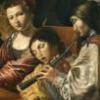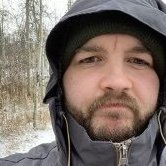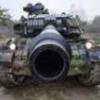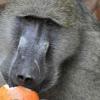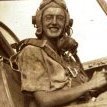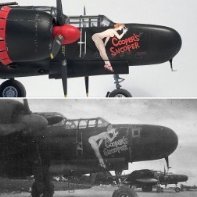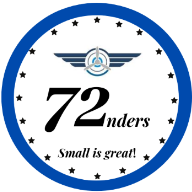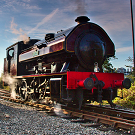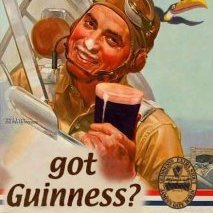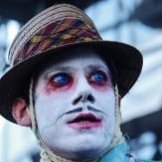Search the Community
Showing results for tags 'P-51D'.
-
I'm quite excited to start this! Here's a box shot - I'll be building Eduard's 1/48 P-51D, in markings of an aircraft flown by Lt James Hickey, out of Martlesham Heath. My late father was RAF groundcrew, and based at Martlesham until it became an American base in 1943, when he was transferred to work on Wellington bombers at Chipping Warden. So, a family connection, albeit a slightly tenuous one!
-
This is the Tamiya 1/48 P-51D Mustang, marked as John C. Meyer's "Petie 2nd". Typical of Tamiya, easy assembly and a nice fit. The only weak points are the wheel well not going back to the spar, and a prop that is too wide and tapered at the cuff (easy to correct). I used an Ultracast seat, and the sliding canopy is a spare from an Airfix kit (suitably reshaped). Wheel well was opened to the aft spar, brake lines added, and the radio, battery and drop tanks wired, and plumbed. Decals are the kits (works well with VERY hot water), and the paints are all Tamiya acrylic. Thanks for looking, Colin
-
Tower, this is Theplasticsurgeon, requesting a flyby. . . Rejoining the circuit with this Mustang kit, bought in 2020 for £8.99. To build like this, modified as a two-seater. Instructions, strangely blank, not saying anything about the Mustang's history or performance. Parts. Familiar - as this is my 5th build of this P-51D kit. And scheme, with superb decals.
-
I need to find some motivation to continue work on my F-84, but still have plenty of time for that. So I figured I’ll start my thread here in the meantime. I have plenty of planned subjects to choose from, including a couple for my yet to be built Wisconsin Aces collection, but I’m going to do a 361st bird for this GB. Specifically, Jasper Joker II flown by Lt. Donald Vulgamore. I’ll be building my first Eduard kit and using Aeromaster decals. And of course using an excellent Schiffer Military History book for reference.
- 29 replies
-
- 14
-

-
I decided to double down with a second build. It will be another 1/48 Eduard kit, this time being a fillet-less D-5 version. I’ve had this kit in the stash for a couple years with the intent of doing Richard Peterson’s “Hurry Home Honey” because I really really like the dark green over NMF scheme the 357th FG had on its early Ds. While researching the plane the other day on the LittleFriendsUK site, I came across a different plane from the same squadron with a pilot from my home state of Wisconsin. Always one to want to learn about the pilots from my state, I soon found out the pilot, Col Irwin Dregne, was an ace and was the last CO of the Yoxford Boys. His plane carried the same camo as Peterson’s and since Bullseye Decals’ excellent Yoxford Boy series has markings for it, I decided I’m going to build Dregne’s plane (just had to purchase the decals since it was on a separate sheet from HHH). It carries two names: Bobby Jeanne for his wife and daughter, and then Ah-Fung-Goo II which apparently was a name chosen by Dregne’s crew chief.
-
The P-47M I have started same days ago still needs time for the paint to harden. So I'm starting a new model, after my accident at home I have a lot of time for myself. The old Hasegawa model from 1992 has been with me for a long time. I simply can't dispose of old models and prefer to build these for the second row. This kit has been deprecated for Germany, but no problem for a model builder. I created the swastikas on the fuselage myself on clear decals.
- 22 replies
-
- 3
-

-
As I am sure you are all aware, a number of the BM community members have for some time been contributing some fine model builds to the 453rd Bomb Group Museum at Old Buckenham. Some of the models are complete and live in the museum now, and a number are still under construction, as WIP's on here. The models came courtesy of the curator James Clarey. The BM team as I recall it consists of @CedB, @giemme, @general melchett, @Fritag, @The Spadgent, @Ex-FAAWAFU, @tomprobert, @woody37, @Tcoat, @Stew Dapple and @rob85 . Massive apologies if I have missed anyone! I got to join the team last year courtesy Ced and Giorgio, and of course, this all started way back in 2019 (I believe) when Ced hosted our three American (but Brits at heart) colleagues @Navy Bird, @Procopius and @Cookenbacher, for Telford SMW 2019. I had the chance to visit Jim last September during a short break we took in Suffolk/Norfolk. Jim's hospitality is legendary I'm sure, and on arrival we enjoyed a hearty full english breakfast. Apart from watching some light aircraft flying in the summer sun, we obvs got to see the fine museum there, but were also treated to an incredible behind the scenes view of the artefacts Jim had collected over the years representing the USAAF's time in East Anglia during WWII. My wife often refers to me as a "lucky chap" and indeed on that day I came away with a couple of models to build for the museum. Jim also lent me one of his many volumes to assist in the selection of a subject for the B-17, more of which will feature in a later museum build. Much time has passed since I brought these home, and much dialogue with Jim eventually got us settled on the subject for the P-51. Jim's original spec was "A green nosed mustang from East Wretham please". As I looked into this, over time I came to realise there were many decals available for representative aircraft from all three Squadrons of the 359th Fighter Group that were based in East Wretham during the later part of WWII. Aero Master alone have produced no less than 6 different sets, each with around 3 representative aircraft, all with the distinctive green nose. I managed to obtain these two sets, before we determined the actual aircraft for this build. Being a P-51 fan, with a few built in 1/72 and a few more in the stash, I'll likely build another Green nosed example for my own collection. I eventually managed to pin down an example flown from the 370th FS flown by Lt. John W. Lamont, with the help of the 359th FB page. It seems that Lamont enlisted in his hometown of Seattle, WA, on 25 September 1942, and joined the 370th Fighter Squadron on 17 August 1944. He flew 66 combat missions, completing his tour of duty with the 359th Fighter Group on 21 July 1945. A picture of the young Lamont: And the only picture I have found so far of "CisCo" So, onto the build........ There has been some (Cue wild laughter from the gathered masses) delay in starting this build for a number of reasons, one major modelling distraction being a commision build of a 1/35 AFV for the MOD, via the Tank Museum. This build is coming to a close over the coming week, and will indeed be handed over to the MOD at the end of May. .......... phew! There is also some peer pressure from Steve and Giorgio ......... something to do with standing "the first few rounds" in September when some more of the other builds will be presented to Jim, at the museum. We'll just have to see about that ........... !!! So the usual pictures to get us started............ The kit, you all know it I'm sure, and indeed will recall the fine museum build of this very aircraft by Giorgio last year. A very fine model for it's time. The usual sprue shots: Some aftermarket etch in the form of Eduard's set no. 49216. And the aftermarket decals from Aero Master, set 48-653 chosen in the end, aircraft number 3 at the bottom: To offer a flavour of these 359th Fighter Group "Green nosed" Mustangs during their time at East Wretham, here are some statistics taken courtesy of the 359th Facebook page. "During its 17 months of operation, members of the 359th Fighter Group, comprised of the 368th Fighter Squadron, the 369th Fighter Squadron, and the 370th Fighter Squadron, excelled at escort missions and at the very hazardous jobs of “killing” trains and destroying aircraft on the ground. There were 13,455 sorties flown by the pilots of the 359th. In addition to guarding the “heavies” they shot down 241 enemy aircraft, with an additional 33 probables and 69 damaged. Another 122 were destroyed on the ground plus 107 damaged. Almost 500 locomotives and 1,400 railway cars were destroyed or damaged. Other ground attacks supported troop movements and targeted infrastructure. To do all of this 1,000,000 rounds of .50 calibre ammunition was expended along with nearly 900 bombs of varying poundage. The Fighter Group lost 121 pilots." So this will be my tribute to those 121 lost airmen, and to all those who served during those challenging times. I hope to start construction in the next week or so and I may look into additional aftermarket detail sets in the meantime. If anyone has any recommendations for further detail sets, speak up chaps! Lastly, thanks for following. Terry
- 152 replies
-
- 24
-

-
- 8th Airforce
- P-51D
-
(and 1 more)
Tagged with:
-
With the restoration of NZ2423 to airworthiness having got to an exciting stage, I figured it was time to work on my scale model of it. It'll comprise the Airfix 1:72 P-51D Mustang and a Ventura decals sheet. The end goal will be to meet with it and pose my model with it at Warbirds over Wanaka 2024. This model will depict NZ2423 when it was in service with No.2 Territorial Air Force (Wellington) Squadron, stationed at RNZAF Ohakea from July 1954 to October 1955. P.S This is my first time posting on this forum and attaching photos here, so I hope this all goes well
-
The first Swedish Mustang is a P-51B-7 du 354th FG interned on 13 may 1944. He is followed by another one in august, then by two D-5 this same month. These aircraft arrives at a time where Swedish AF is struggling to get some high performances fighters, and the government is in the process to make a deal US and/or UK authorities on the tune of fighters for internees, as there are more than 1000 Allied Airmen stranded in Sweden An agreement is finaly reached for a number of P-47, that would be designated J26, but in march 1945, last minute change for Mustangs for 50 ex-USAAF machines (4 already « delivered »!), bound to equip Flottilj 16 (F16) at Uppsala, deliveries starting from 10 april. They will still be J26. In 1946, 90 more are bought from USAAF, plus a further 30 for spare parts the next year. The last Sweedish Mustang will leave active service with the air force in 1954. 93 will be sold to Israel, Republican Dominique and Nicaragua. So here's my interpretation of Swedish J26 serial 26031 (ex-USAAF 44-72220), from Flottilj (escadre) F16, 2. Division (Escadron, casserole bleue) at Uppsala, The aircraft must have suffered an accident in june 47, as it was then used as a ground instruction airframe. It was one of only three J26 painted in camo. Tamiya kit looks good to me, very simple and easy to build. No difficulties, I had some, but they're of my own make . A quick note about the decals : The instruction sheet show clearly roundels in six positions, standard with J26 and other Swedish fighhters at the time. BUT... Xtradecal gives you only four ! By chance, a friend of mine stepped in, and gave me the last two I needed. Thanks Stéphane ! Hope you'll like it. And if by the way you've gott a better understanding of Swedish AF than me (not difficult at all!), feel free to add or correct.
-
Hi everyone, Well I never thought this day would come. I bought this kit in London in 2007, started it a few years later, pushed it through at least three KUTA.... All in all a rather abysmal performance. Not a shake and bake kit, for me anyway, despite the lineage. Hence the repetitive loss of mojo. But anyway, all this is now in the past. Although,,, this morning things almost turned to a Titanic re-enactment when I took the kit outside for a few photos. Six Vervet monkeys rushed towards my petrified P-51D, thinking it was something tasty. I had my hands full trying to chase them without smashing the model all by myself. All in all, it was a peaceful and relaxed photo shoot! I even forgot taking a photo of the port side, with all the victories' score board. Anyway, here are a few photos of this fantastic plane. Here you are. All in all I am happy with the result, and damn pleased to have finished it. I will use the Old Crow decals, also present in the Tamiya box, on my Academy P-51D, as it is another emblematic paint scheme. Thanks for watching and keep having fun! JR
-
The music in this case is provided by a Packard Merlin engine in a P-51. I will be using ICM’s 1/48 P-51D to build a Mustang flown by the Swiss Airforce. Whilst researching the subject I came across this website which I will be using for my references. https://swissmustangs.ch Markings came from a aftermarket sheet from LF Models
- 15 replies
-
- 6
-

-
- P-51D
- Swiss Air Force
-
(and 1 more)
Tagged with:
-
Hi everyone, This is another model I am ashamed to still see on the shelf of so-called doom. Like the Etendard IV M of my other KUTA thread, it is very close to completion. A few photos to prove I sometimes tell the truth: Funny enough, and at the risk of repeating myself, I must be the only modeler in the known universe who did not find this kit a shake'n bake. Thanks for watching. JR
- 31 replies
-
- 13
-

-
Hi there, Last one out of the production line. Ok, yes, I've yet to add two wing tanks, and one last stencil... I did have a lot of fun with this one, but yet I managed to make a lot of errors and had my share of bad luck, don't worry! So, I'm not 100% happy with the result. 70% maybe? Still, I like it, and hope you will Weathering much too strong for this scale, to be more specific for the exhausts and the guns, antenna wire much more 1/32 than 1/72, bad fi tof the black upper antenna (Gonio?), etc... Also, bad luck with PMA decals. Everything went well with the stylized sun on six positions, but I had three different sets of numbers and stencils wrecked before the one that decided to stay in place! This specific F-51 is part of a group of aircraft that were paid by different donators, 067 (F-51067; 44-74956) being paid for by Taipei City(City name is written under the pit. Any comments welcome, do not hesitate to tell me what you think, whatever it is.
-
Hello all; Here's my take on Lou IV. I've detailed a lot of the thought and decision-making process in the WIP thread, which can be found here; In short though, I based my decision on using blue paint on three main arguments; Dana Bell's - @Dana Bell - review of the remaining original transparency showing what he reports as blue on Lou IV. I assume Dana can tell the difference between blue and green 🙂 Michael Bowyer's contemporary notes of his observations that some 361st Mustangs had blue paint on them - this establishes that blue was used; assuming Michael could tell the difference between blue and green 🙂 Why not? Clearly using bright colours wasn't an issue, the nose was bright yellow! I came to the belief that something I called the "go-faster stripe" effect came into play and that these young men painted their airplanes in a way that made them look cool. Certainly the USAAF encouraged the moral boosting effect of nose art and other decoration, so why not blue? Anyway on the the pics; And some pics to illustrate the tonal quality compared to the black and white images; And lastly, just for fun... If you have the patience for it, there's even more detail available below. Comments welcome, critique welcome too. Cheers; Mark.
- 29 replies
-
- 51
-

-
Hello all, This build was another GB with my dad which was completed a few weeks ago. Both kits are Tamiya 1/72, Captain Weaver's mustang was done by my dad, and "Tallahassee lassie" was done by myself. The models were painted with Mr Color Super Metallic 2 Super Fine Silver and Super Iron and Mr Color H8 Silver, NO PRIMER was used. The only AM products that were used are PE for the interiors and antennas. Hope you enjoy! "Tallahassee lassie" : Captain Chuck Weaver's mustang: Some pics of both mustangs together:
- 13 replies
-
- 38
-

-

-
North American P-51D-15 Mustang (03838) 1/32 Carrera Revell The P-51D was developed by the North American Aviation company as a possible fighter for Great Britain, but due to the poor performance of the original Allinson engine it wasn’t all that good, especially at high altitude. Luckily they decided to try strapping a Rolls-Royce Merlin engine to the airframe and it brought out the best of its design, which included the energy efficient laminar flow wing that gave it the potential to escort Allied bombers all the way to Berlin with the addition of drop-tanks and a lean mixture when not in combat. It was flown in this guise as the Mustang III in British service, and as the P-51B/C in US service, then as the P-51D with the bubble canopy and cut-down aft fuselage, with an additional fin-fillet added later to improve stability that had been reduced by the new shape and fuel tank location. In British service it was known as the Mustang Mk.IV, and the same variant made at the Dallas factory with hollow AeroProducts props that was designated P-51K in US service was known as the Mk.IVa in RAF service to differentiate. Sadly, the hollow prop was prone to vibration thanks to some inferior quality control at the factory, so was often swapped out in the field. The P-51D is the Mustang that most people think of when they hear the name, unless they’re more of a petrol head or a bit horsey. The Kit Here Revell have re-boxed their own new tool kit from 2017 this time with parts for the later Mustangs. The frankly lacking openend box holds a good deal of plastic. As well as the wings there are nine sprues of grey plastic and three clear sprues. There are three full canopies provided, two labelled as "Spares", which probably goes back to the problems with the canopy on earlier kits. These look to have no issues though. The rest of the tooling is upto Revell's usual high standards. Construction starts in the cockpit with the instrument panel. The lower part differs if you have an aircraft armed with rockets or not. Instruments are provided as decals. Next up the seat back with head armour goes onto the cockpit floor in front of the tanks after attaching to its frame. The rack for the radio equipment then goes on top of the tanks, followed by the equipment. The main part of the seat then goes in. Revell provide a normal seat and a more bucket type of seat. There is no mention made of which one to use for which deal option, the modeller will need to do their own research on this. The left an right interior sidewalls are then built up from various components. These go together around the floor/tank assembly with the rudder pedals and instrument panel going in at the front. To the rear top of this is added the canopy rail; and to the front the engine firewall. Next up the lower radiator assembly is made up, this part also indulges the tail wheel bay. The individual fuselage sides now attach to the relevant tail parts. They need to be added in this order as now when the two fuselage halves go together the cockpit and intake sections need to go in at this point. At the front dont forget to install the exhaust stubs as well (there is no engine in the kit). Am mounting paste for the prop with lower intake then goes on the front. Now we move to constructing the wings. The upper and lower wings are both a single part. The wheel bays and wing spar need to be assembled and placed between the wings. The appropriate holes for wing tanks, Bombs and or rockets need to be drilled out first. Once the wings are together the control column for the cockpit is fitted as the top of the wing is the floor of the cockpit. The fuselage can now be mated to the wings and the intake lip for the main intake made up and added. The control flaps for the intake are added and at the front of the wing a plate is added between the wing and fuselage sections. If you are making your model wheels up then a section of closed door can be added in. Next up the tail surfaces are added, for the rudder and control surfaces all these are separate. Following this the ailerons and flaps for the main wing are built up and added on. The flaps can be raised or lowered as needed. Moving back to the cockpit the front screen is added with the instrument coaming and gunsight being fitted in. The font scree contains a part of the fuselage to allow a good faired in fit. The main canopy gains its internal fixtures before being fitted. Moving on to the undercarriage the tail wheel and strut are built up first and added in. For the main gear doors they must be cut from the one section which provides for the closed bay doors. The main wheels are two part, these are fitted to the legs and into the model along with the gear doors. At the front the prop is made up and fitted. For the weapons 8 rockets, tow bombs; and a choice of two different types of drop tank are provided to be used as needed. The last items to be fitted are the aerial, pitot tube, and navigation lights. Decals The large sheet provides decals for two options; 44-14985 "The Mille G" Flown by Maj Giller, 343rd FS, 55th FG, Wormingford, England 1944 (This aircraft still flies today) 44-15459 "American Beauty / Lovely Lila" 308th FS, 15th FG, Italy 1944 Conclusion This is a great looking kit from Revell and its good to see the later mark now kitted. Revell model kits are available from all good toy and model retailers. For further information visit or
-
Hi everyone! Inspired by @AliGauld's and @Dandie Dinmont's concurrent builds, and being a perpetual starter, I decided I'd have a go at one of my newly arrived Airfix P-51D Mustangs. I remember, aged nine or ten, building the 1974 issue in the boxtop scheme "Cripes a' Mighty" at my dearly-departed Grandmother's flat one school summer holiday over forty years ago, and being incredibly proud of masking the blue nose (3M automotive masking tape blagged from my Dad ). I've just found one of these same kits, which is allegedly "mint condition", which I'll add to my nascent nostalgia collection of kits that are for looking at but not building. All this rose-tinted reminiscing means that this build is a sort-of nostalgia build in itself. Although I can't imagine Nanny Sellick, or indeed my parents, being too impressed if this had been my choice of subject back then (although I'm sure Dad would have smiled!): http:// Fnaar, fnaar! The intention is to build the second version of "Passion Wagon", but that does depend on how well my attempt at NMF turns out - if its dire, then it'll be back to Olive Drab and Neutral Grey. Obligatory box and sprue shot: http:// So the upshot of all this silliness is yet another build to go with all the others. When will I ever learn? (Who said, "never"? Own up!) Cheers, Mark
- 152 replies
-
- 10
-

-
Thanks "hawkeye" Tbolt (link) ! Is Eduard to release soon a new tool (?) 1/72nd North American P-51D kit? Let's have a look at page 52 of this month Eduard Info Vol.20 May 2021. Source: https://www.eduard.com/out/media/InfoEduard/archive/2021/info-eduard-2021-05-enrr.pdf V.P.
-
Cavalier Turbo Mustang III (11149) 1:48 Halberd Models Conversion for Eduard P-51D After WWII, the P-51 Mustang continued to serve with the US Air Force for a while as their standard fighter, although with every day it became more out-dated due to the headlong rush of aviation technology after the advent of jet propulsion and the race to break the sound barrier. By 1957 the last Mustang left US service, and North American sold the intellectual rights to the design that they then considered worthless to Trans Florida Aviation Inc., who intended to create a high-speed executive transport by taking surplus airframes and rebuilding them as an improved two-seat civilian aircraft. The initial Cavalier Mustangs were stripped and rebuilt without their military equipment, but apart from their livery and the taller rudder fin, they were visually almost indistinguishable from the old warhorse. They were well-appointed, with new avionics and luxury interiors, were powered by an improved Merlin engine, and were available with various-sized fuel capacities that gave a range from 750 up to 2,500 miles. Around 20 were made of the initial mark, then the Mark II was designed, with tip-tanks for extra range and various structural and avionics improvements. It was also outfitted with hard-points for weapons, and another boost to the power of the Merlin engine. Some of these were sold to Asian and South American countries, where some El Salvadoran airframes took part in the Soccer War. During this period Cavalier were actively courting the US Air Force trying to sell them the improved airframe as a Counter Insurgency (COIN) or Close Air Support (CAS) platform, but they weren’t biting, so sales were low to other customers. Soon after, they retired the trusty Merlin and replaced it with a Dart 510 turboprop, again from Rolls-Royce, although they had really wanted a Lycoming engine. It reduced the maintenance burden and was more gutsy and fuel efficient, but they still couldn’t get the US government interested. The design with the preferred Lycoming turboprop engine replacing the Dart was sold to Piper, and became the PA-48 Enforcer, but only four were made and shared so few parts with the original Mustang that there was little in the way of cost-savings from use of existing Mustang parts. Only two of the four survived the years in between, and are to be found in US museums. Many of the original Cavalier Mustangs were converted back to their original specification when Warbirds and heritage flights became popular. The Kit This is a new resin conversion kit for the Eduard P-51 Mustang in 1:48, and will convert it to the Rolls-Royce Dart equipped Turbo Mustang Mk.III that was unsuccessfully marketed to the US Airforce, and we’ve already reviewed the original Mk.I and Mk.II Cavalier conversions that carried piston engines here, which has the same preamble for obvious reasons (my laziness, and a shared story). It was an evolutionary dead-end, but looks pretty awesome, so I for one am extremely pleased to see this conversion kit, resigning the old set by the now defunct Heritage to the bin where it belongs. You can buy the set in a box with some Eduard Overtree sprues, or separately in a smaller white box if you already have a candidate kit in your possession. The conversion arrives in the aforementioned white box with a large sticker and a profile of the aircraft on the front, plus logos and a link to their eBay shop in red. Inside are 24 resin parts in Halberd’s signature green resin, surrounded by bubble-wrap and Ziploc bags, with the two large replacement fuselage parts taped together and encased in bubble-wrap to keep them safe and aligned during shipping and storage. In addition to the resin is a small set of decals on white backing paper, plus three pages of A4 instructions printed in colour on both sides. The parts are expertly cast, and the fuselage parts have all the detail of the Eduard parts, carried over flawlessly onto the new nose that extends from the front of the canopy. The new and old details are perfectly matched, which is very impressive, given the finesse of the originals – kudos indeed. This finesse is carried through to the large square-tipped prop blades, the oval side-mounted exhaust and the antennae that are attached to the new taller tail fin. As usual, take care with sanding resin, as the fine dust can be hazardous to your health if you breathe it deep into your lungs. Wearing a mask and wet-sanding will help keep you safe, and carrying out the task outdoors would be ideal. Construction begins with adapting the seat to remove the head armour, adding it and the new resin rear passenger seat to the cockpit along with the headrest as part of building the kit cockpit with whatever upgrades you may or may not wish to apply from other sources. The new fuselage needs little in the way of clean-up, but ensure it is done before you begin adding the kit parts, and remember to use CA to glue them, as resin cannot be bonded together or with styrene parts by our usual plastic glues. Not even the mighty Tamiya Extra Thin can do the job. Epoxy resin can be used for large parts if structural strength is needed, but it’s slippery stuff and takes 5 minutes for initial cure, so needs to be held in place with tape or clamps, whereas CA generally bonds almost instantly. It’s your choice of course. At the tail the fin has been adapted ready for the extended tip, and you should drill two 0.2mm holes in the sides for the antenna on each side. The fin fillet from the kit will fit in the gap at the leading edge of the tail, and the kit rudder will fit too once you have removed a short section from the top, using the new fin top as your guide. The kit canopies are used, but with the stiffening hoop omitted to avoid decapitating the passenger and a new resin part at the rear, while the windscreen loses its rear-view mirror. Going back to the fuselage, the front is finished with another fine resin part, with a top intake and a small gap between the cowling and the gearbox housing, with some fine stators visible at the back of the space. The prop boss has recesses for the four blades cut into its sides, and a peg that mates with the recess at the centre of the nose for easy installation. The prop blades however aren’t keyed, so you will need to set the angle yourself to ensure they are all correctly aligned and facing the right way. It may be an idea to create a small temporary jig to help with this. The large exhaust is fitted through an oval opening in the starboard side of the fuselage, and the inner end butts up against a recess inside the nose, so insert that before you get too far ahead of yourself and can no longer see the part’s destination. The kit wings are built up as normal, but have the front section under the nose removed back past the curved section of the root fairing, and the wingtips too, both as shown in red on the instructions. Take care here, because the centre section is shown being removed in steps in two separate diagrams, which could lead to some confusion. The tip tanks have their fairings and a shallow peg to mate to the open wingtips, and they are moulded with the nose separate to allow them to be cast as smooth as possible. I have cut one of the parts free on the previous set, and with careful fitting, the noses can be mated perfectly to the main tank section. Just take some time and care with sanding and test-fitting the joints. The pylons for the numerous weapons the Turbo Mustang could carry are attached to the underside of the wing on pins, and you should first measure and drill the holes, preferably before you have completed the wing, so take care there too. There are six pylons in total, two from the kit, and four resin parts from the conversion, all of which are set 13.5mm apart in a line. I’ve also marked these out on a kit wing and drilled them out, so it’s not so hard. The rest of the kit is put together in the same manner as the Eduard instructions suggest, but it will be key to your success to familiarise yourself with both sets of instructions to ensure you know exactly where all the parts go, and at which stage in the build you should insert them into the model. Markings There were only a few of these aircraft made, so there aren’t many options unless you’re going to go with a “what-if” scheme. From the box you can build the following: Cavalier Turbo Mustang III, Sarasota, Florida, 1968 The colour call-outs use FS numbers and colour names, and the few decals are shown in an enlarged form where necessary to save straining your eyeballs. The decals are well-printed with a thin carrier film, and a small arrow is printed next to the step-marks on the wing roots so that you fit them correctly. Stencils for the large prop blades are included, as are a selection of RR logos and fire warning stencils. My example had two decal sheets in the bag, but yours may not, so don’t assume. Conclusion The previous sets were excellent, but the sheer weirdness of the nose of this version makes me unreasonably happy, and the fact that it has been so well done almost brings a lump to my throat. You really need one for your stash, and to encourage Halberd to create more excellent oddities to fill our cabinets and stashes with interesting aircraft and their lesser-known derivatives. Extremely highly recommended. Halberd Models sell their products via eBay for their ease, and the link below will take you to their shop there. Review sample courtesy of
-
Hey all, Here's Eduard's 1/48 P-51D-5 from their profi-pack kit. Attracted to the colour schemes, I bought this kit a few months ago when it first came out but I've only just got round to it now. It was definitely hard to choose what colour scheme to do her in! Hence why I might've bought a few of Eduard's Overtrees to go with it... Overall it's a very nicely detailed kit and cleverly engineered, however it's still no Tamiya, as I found the fit lacking in a few areas and the tolerences didn't allow for much play with the parts, they had to be put in spot on otherwise the next bit wouldn't necessarily fit. Being this is my first attempt at an NMF, I tried to play it safe with Tamiya Laquers as they actually have quite a nice selection of metallic tones that have been released. I pre-shaded first in black then went in with the metallic colours. Handily, Eduard actually provide a guide to the various metallic finishes that Mustangs wore during their service, and denoted where the aircraft was lacquered or left bare-metal. The Tamiya laquers were also quite hardy so took the heavily weathered effect I was headed for without damaging the finish. Saying that though, I still varnished the bird with Tamiya Semi-Gloss to make it a bit more uniform in appearance. Thanks for looking guys! Sam
- 14 replies
-
- 51
-

-

-
Hi all - Here's my latest - Tamiya's P-51D in 1/48 - An enjoyable build although as ever, Tamiya's decals put up quite a fight. The kit is old but still top quality - it goes together very nicely - My one issue is the way the canopy is attached - with no framing where it meets the plastic. I added scratch built details to the wheel bays, used a Eduard PE cockpit interior with additional parts - also Eduard resin wheels. Painted in Alclad and Tamiya arylics - weathered with oils, enamel washes and pigments. WIP build is here: Thanks for watching Cheers John
- 32 replies
-
- 64
-

-

-
For your Inspection today Airfix's 1/48 P-51D in General Yeager's, then Captain, Glamorous Glen III livery. Extras Eduard P-51D P/E painted set and Seat belts. Clad in a mixture of Bare Metal foil and Alclad II Aluminum Repli-scale decals 48-5058 357th FG "The Yoxford Boys" Thanks for stopping by and checking out my little creation and as always all comments , suggestions, and critiques are always welcome. The WIP is located here:
-
Hi all Started few month ago, finally I finished this kit last night The kit is beautifull and very well detailled espacially when you have exhaust pipe and wheels in resin parts I made an error when I painted the wheels bays. I inverted the colors but see my error too late. I have the royal class box and choose the "shark mouth" scheme I painted the shark mouth, roundels and letters for a best result. The weathering is light because I prefere a plane like this Other pics at this address P-51D Mustang
-
Hi all. A Sunday arvo session done and a model is complete. This is the 1/48th Airfix P-51D Mustang. I wanted a non-silver finished Mustang so I grabbed the OD/NG Rovin' Rhoda/4 Bolts scheme from my Eduard Mustang. There's lots of variation in the colour achieved using lots of thin, layered greens and greys and everything in between. The exhausts, props and spinner are courtesy of Eduard. I need to source some long rang tanks as the kit ones are pretty crap. I'm really happy to have this one finished, dare I say my favourite for the year?!! Almost forgot, I painted the nose checkers ans spinner to match ..never again! I had a lot of fun with this one. Cheers, Mick Some info, the aircraft was flown by Lt. Irvine Snedecker during April 1945. The aircraft was with the 364th FS, 357th FG, 8th AF at Leiston.
-
P-51D Mustang Canopy Set for Revell Kit. 1:32 AeroCraft Models There was little doubt that once the new Revell 1.32 P-51D is a great kit, however one of the areas that lets it down is the overly thick canopy. Ali has worked on this with a new resin canopy. This new canopy is very thin for a resin one, and this reviewer at first thought it was vac form. The canopy is thin and as distortion free as it can be while still keeping all the lines needed for masking. Indeed for masking internal support will be a must. The caopy shown here is as it comes and the clarity is good, but will no doubt be improved with a light polish, and or dip in your solution of choice. Review samples courtesy of

